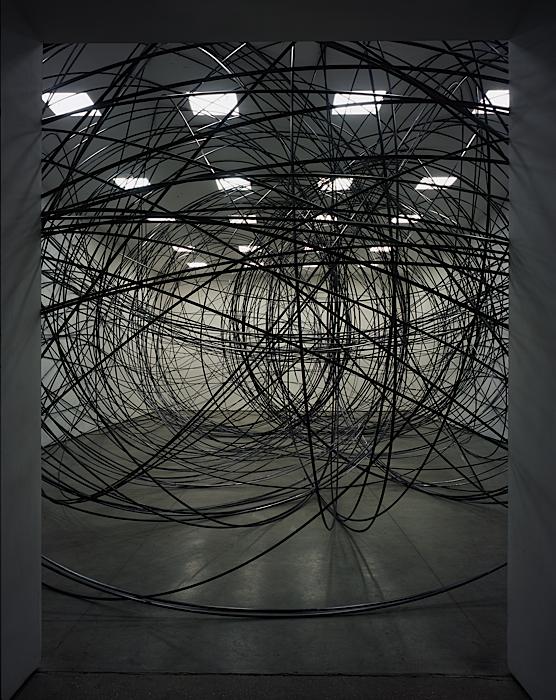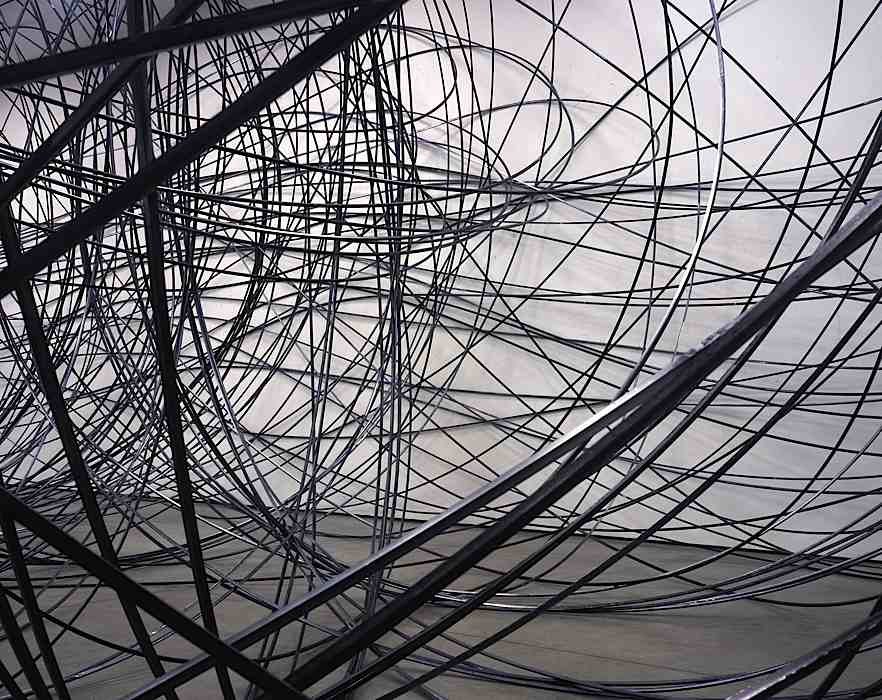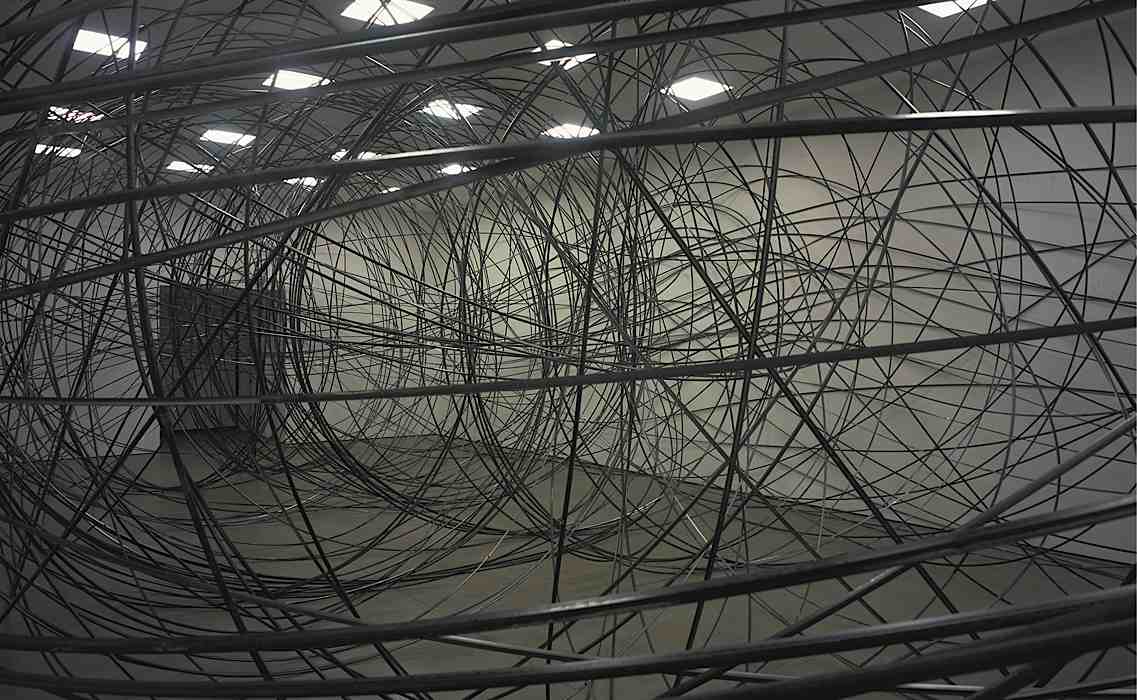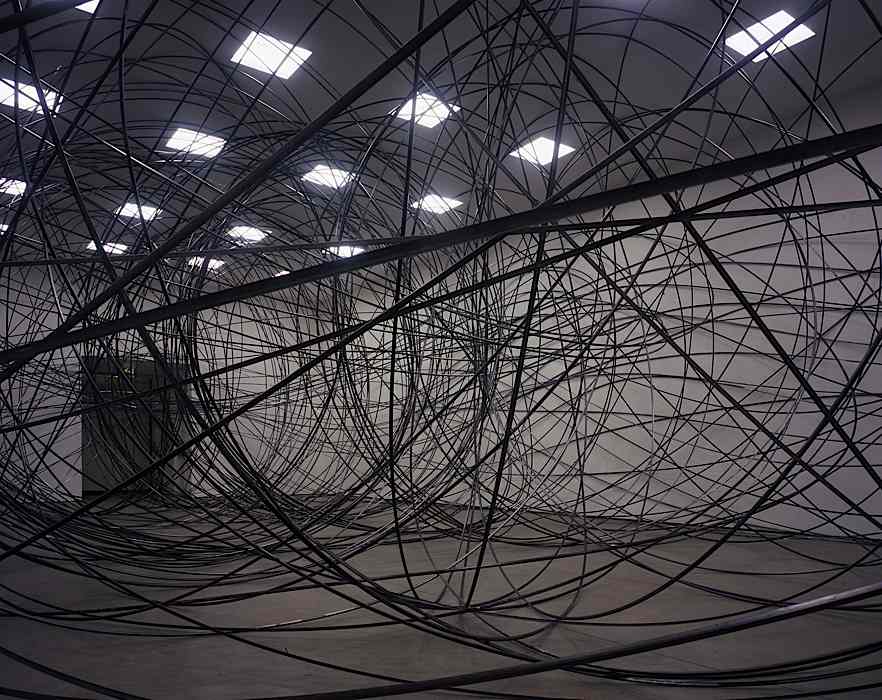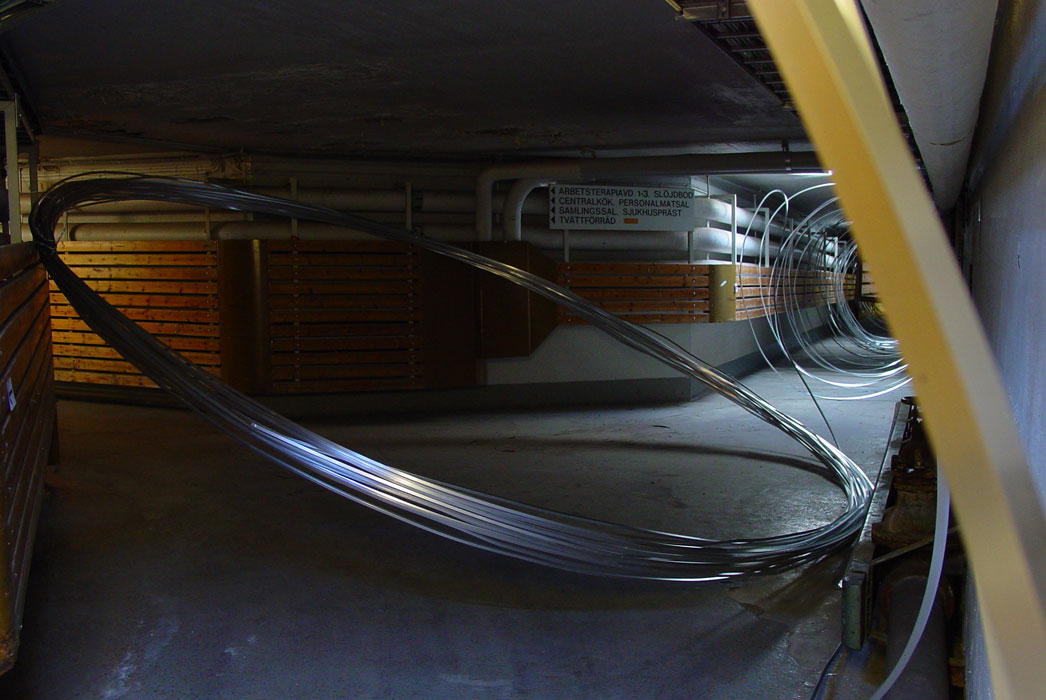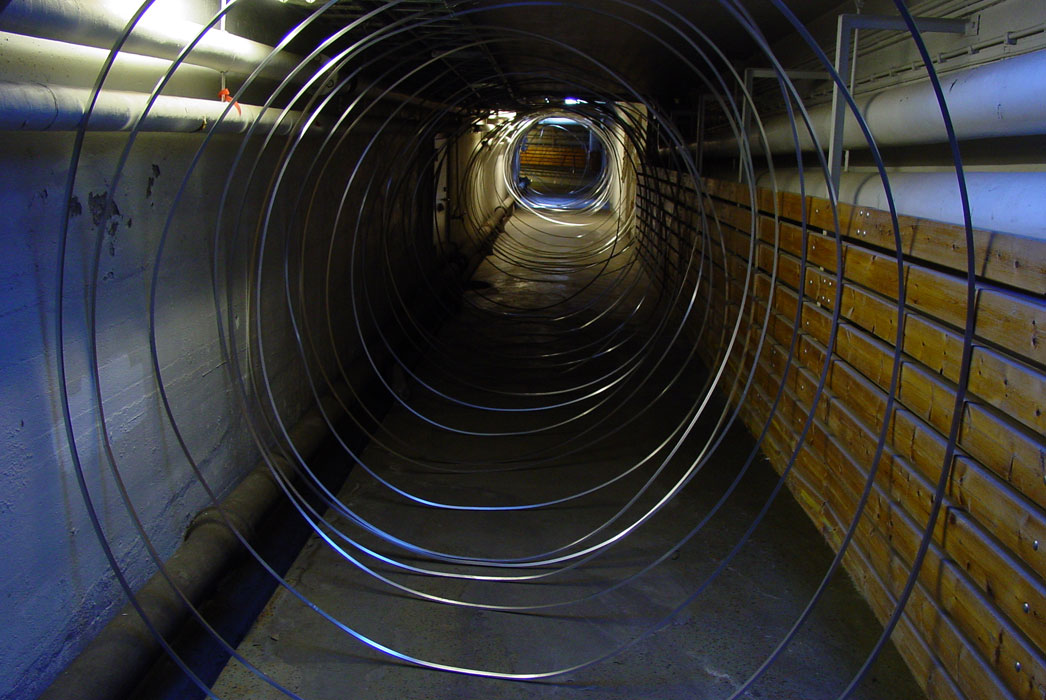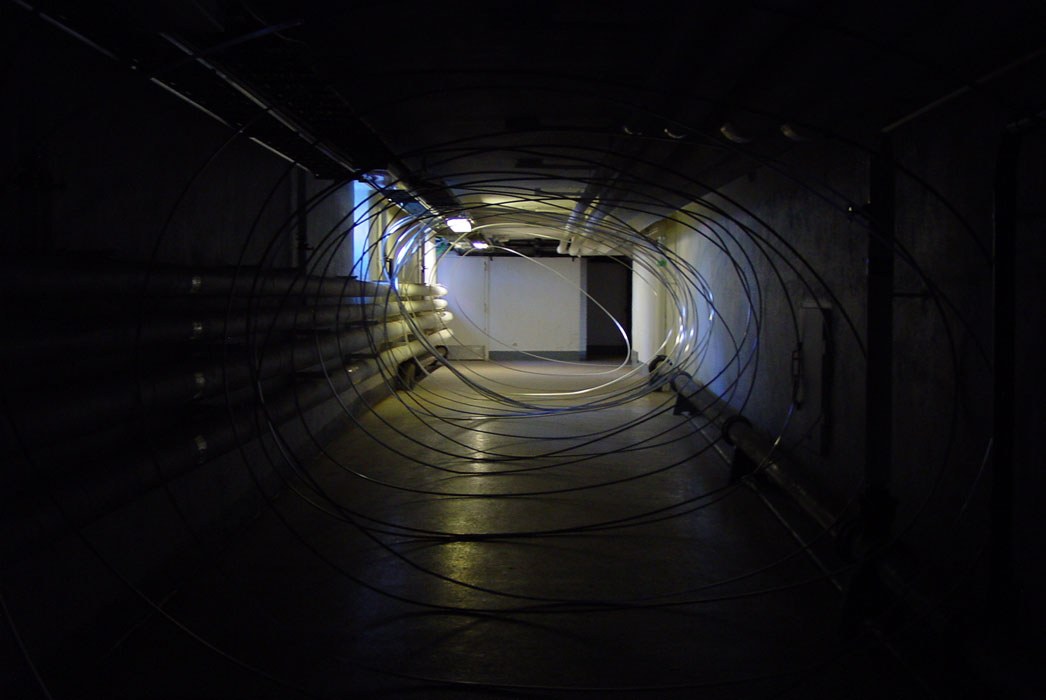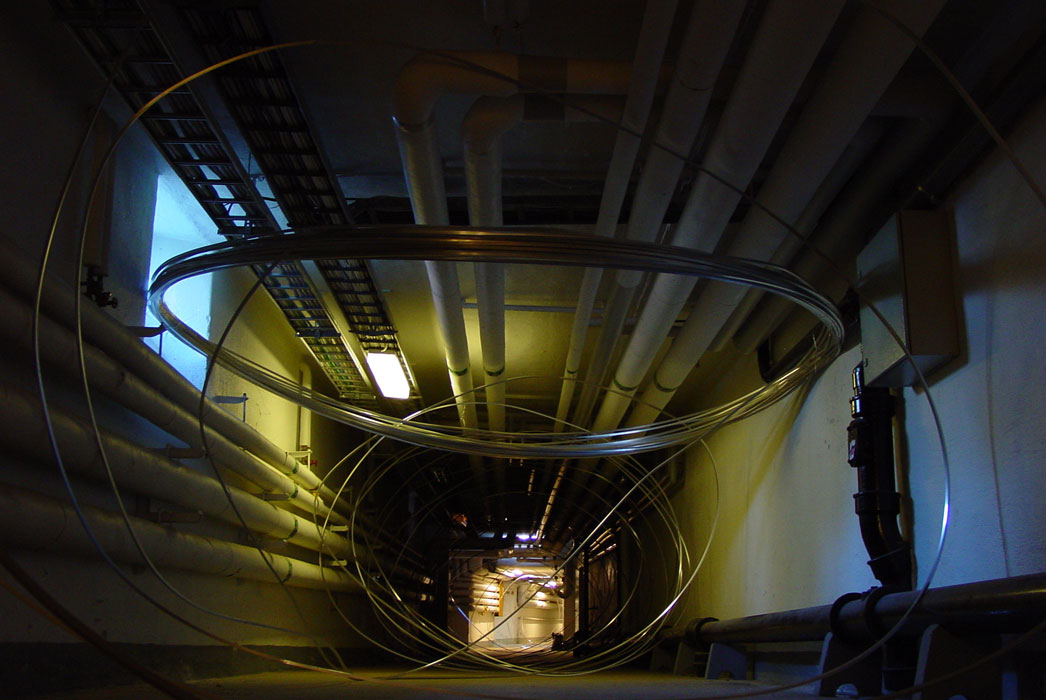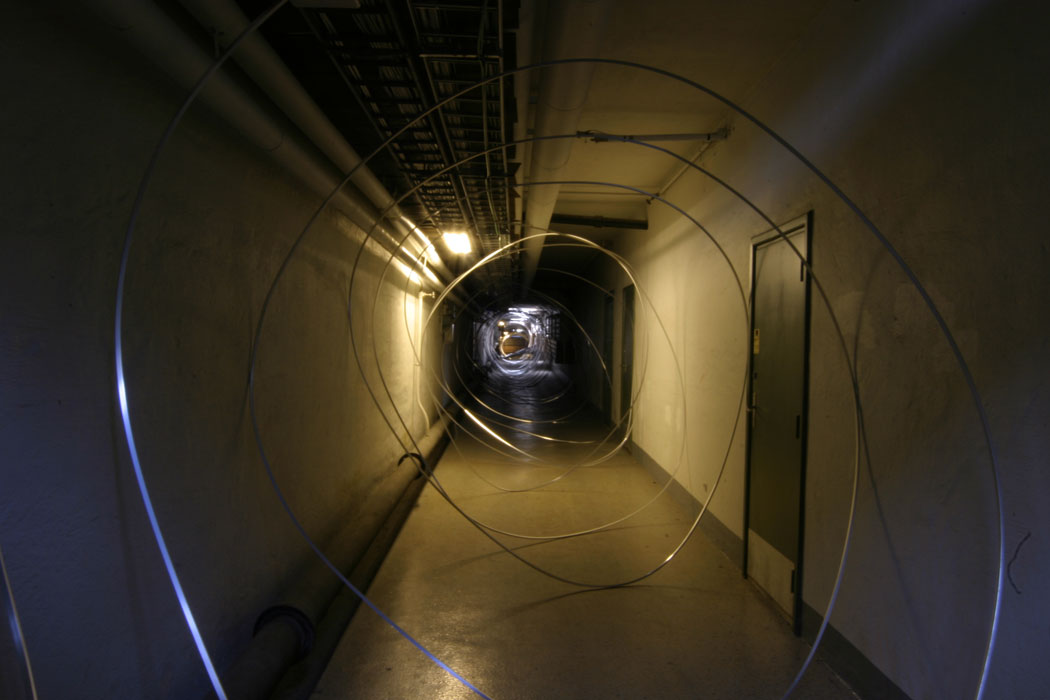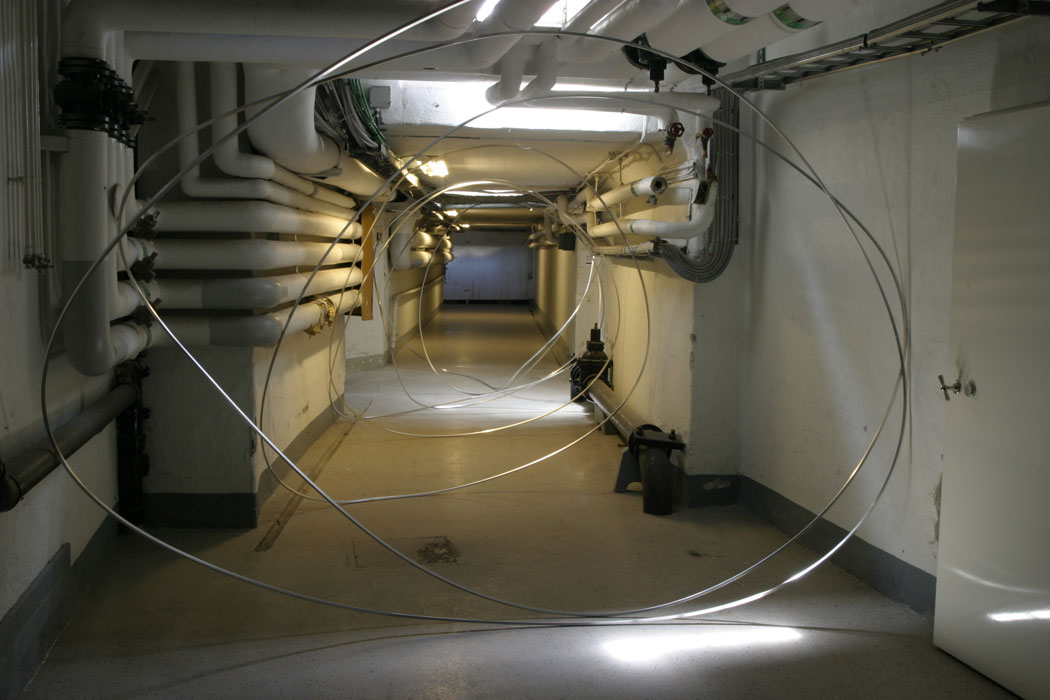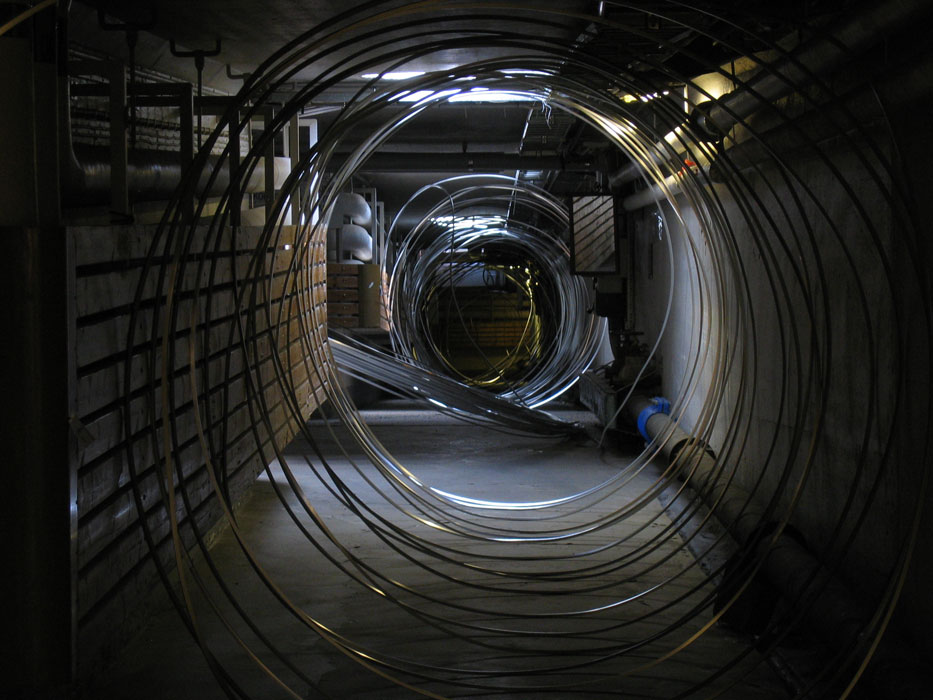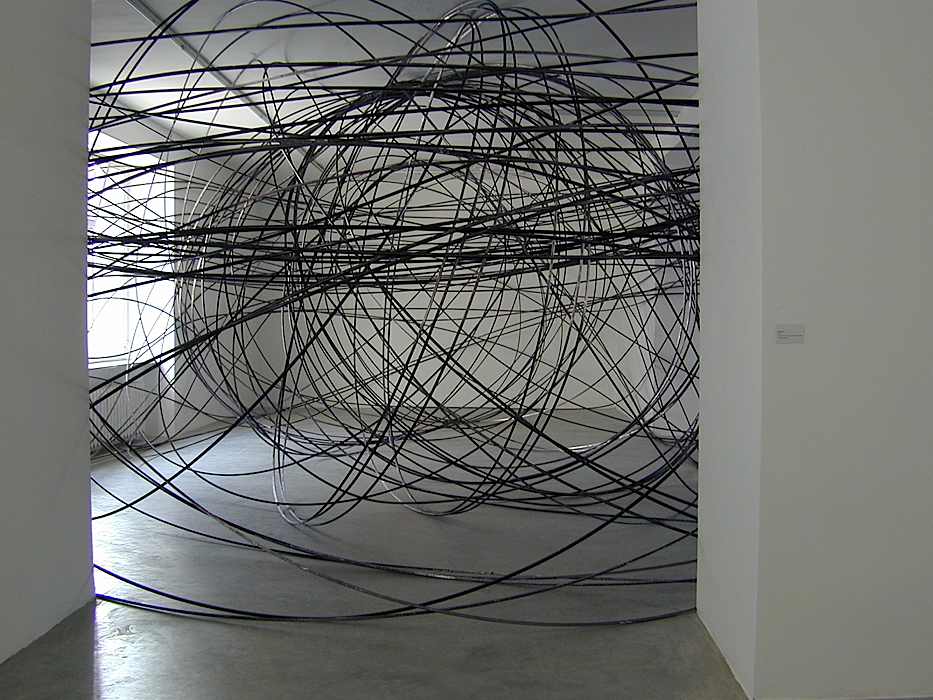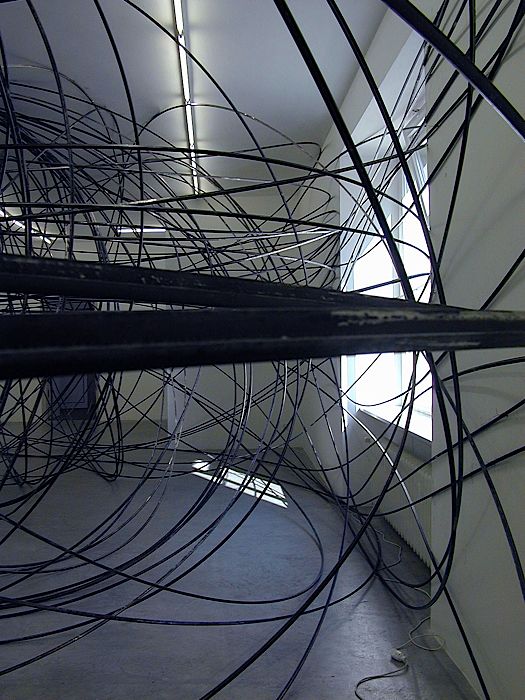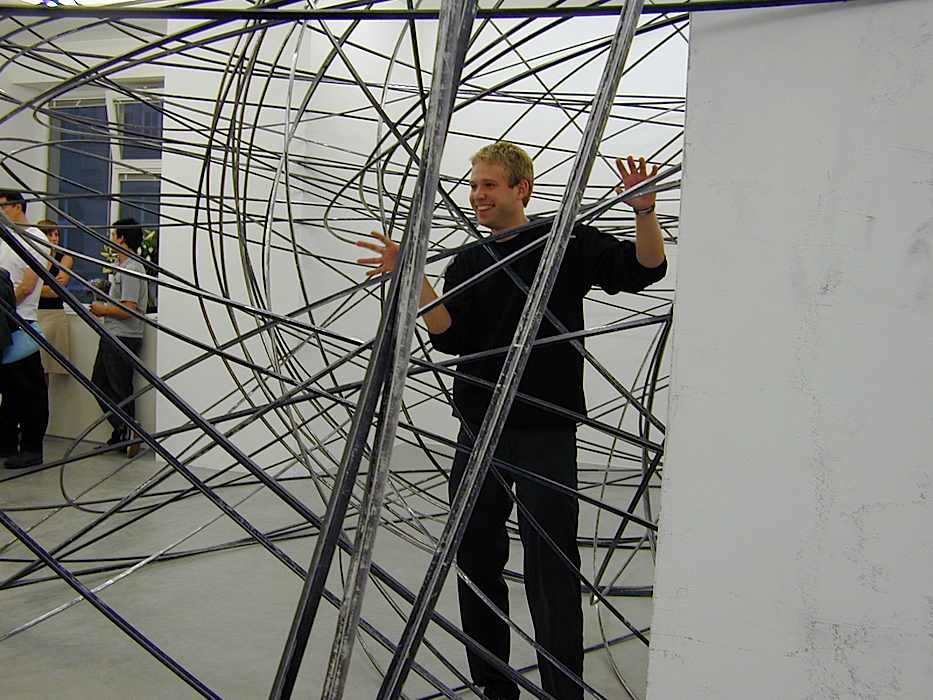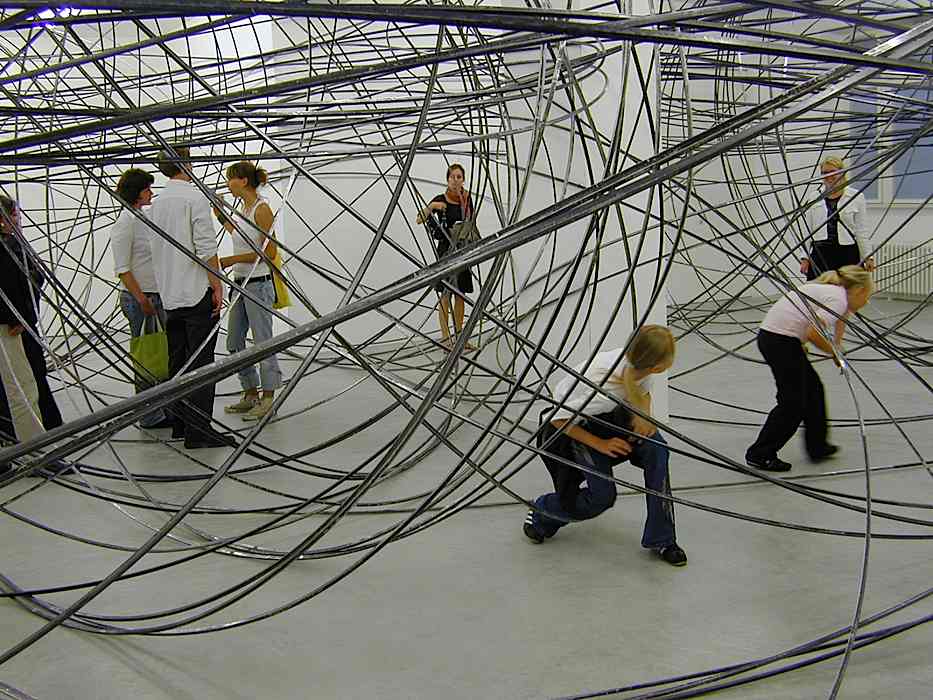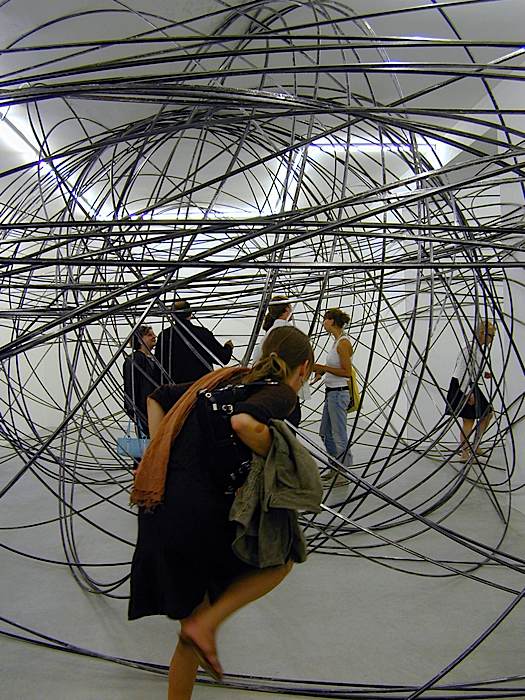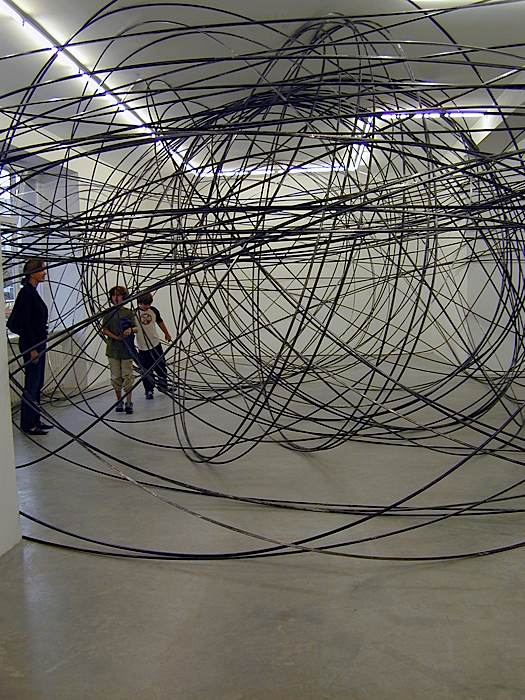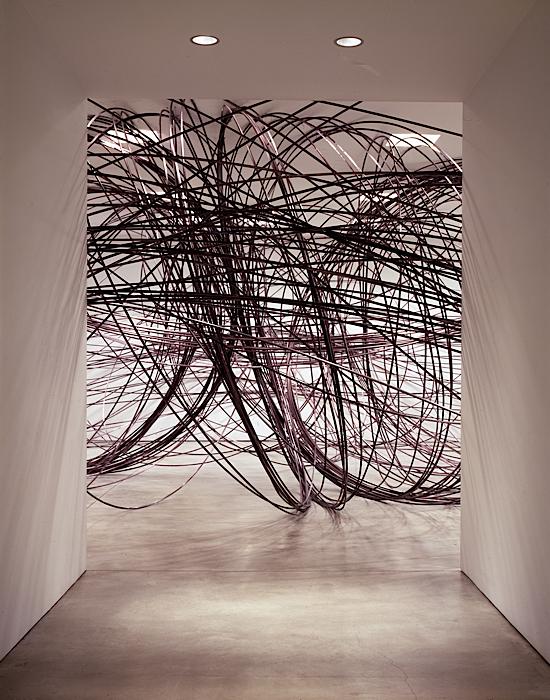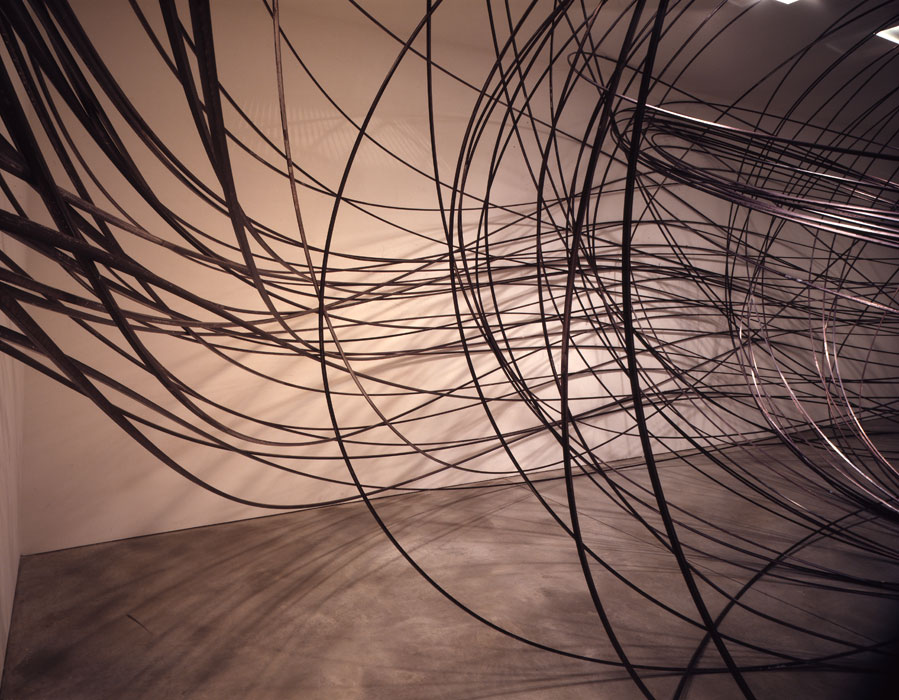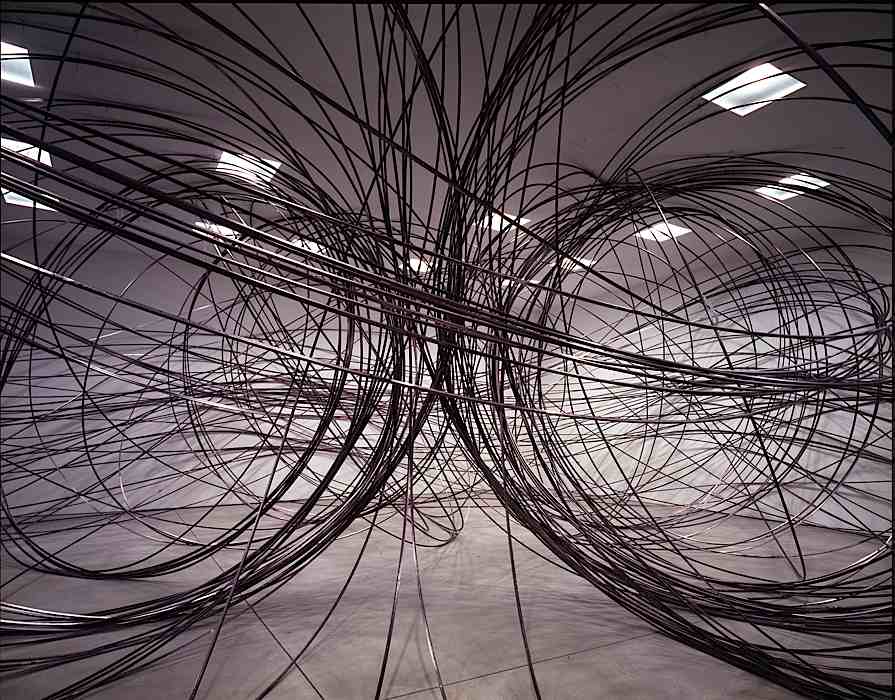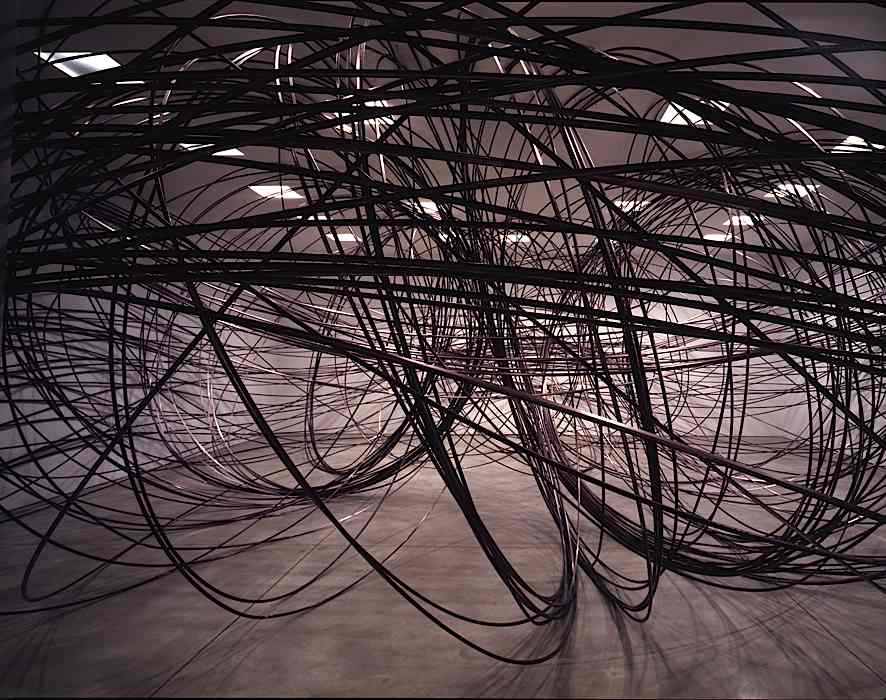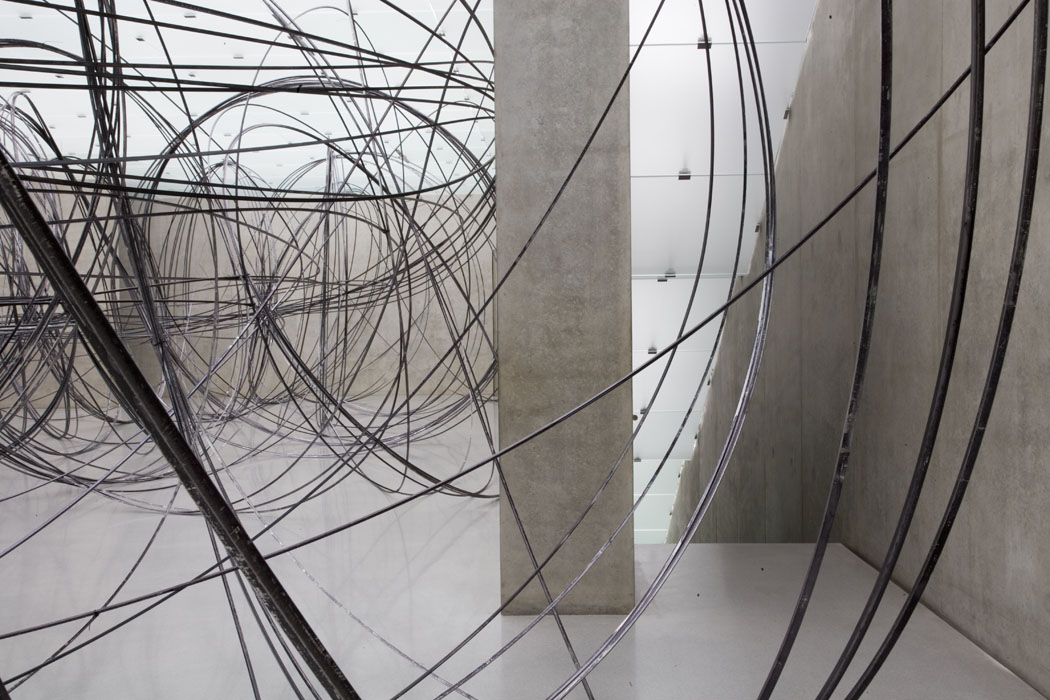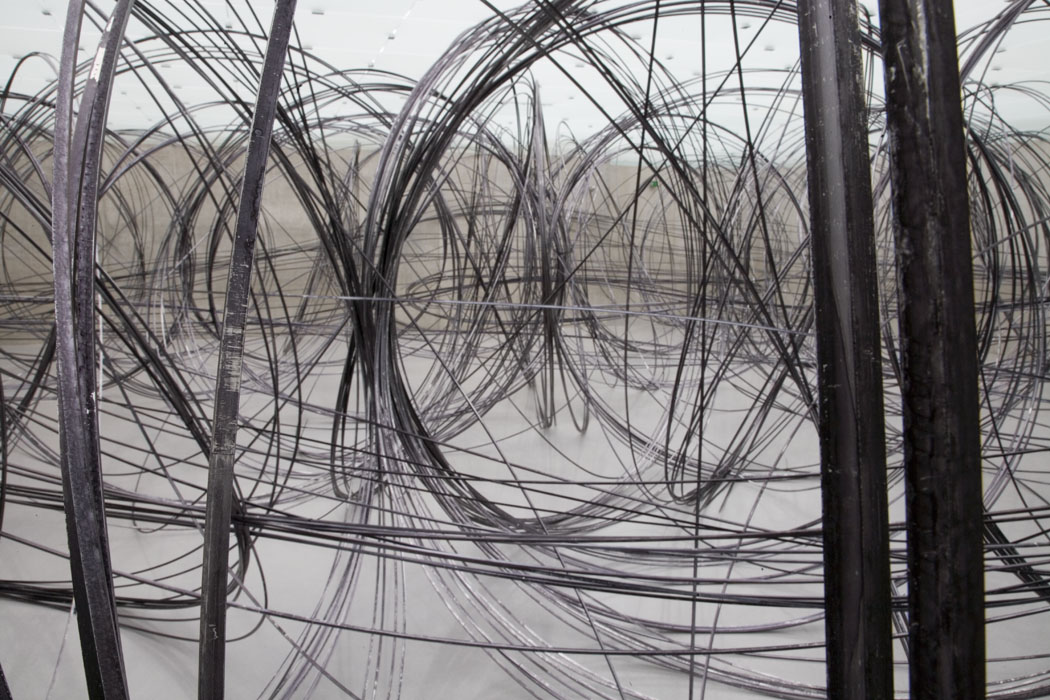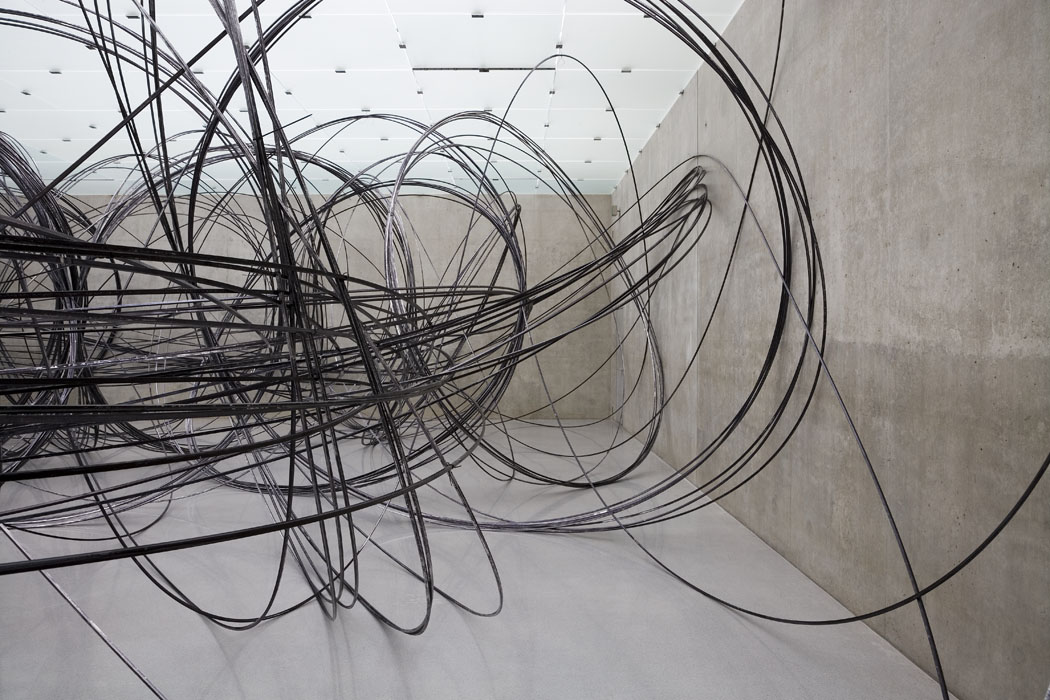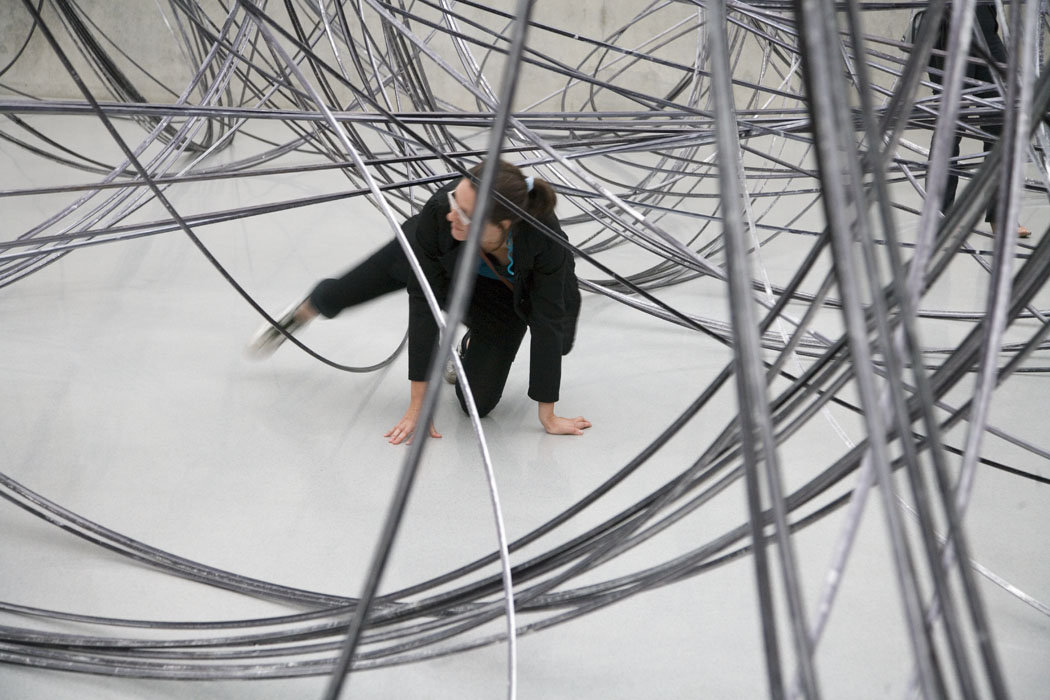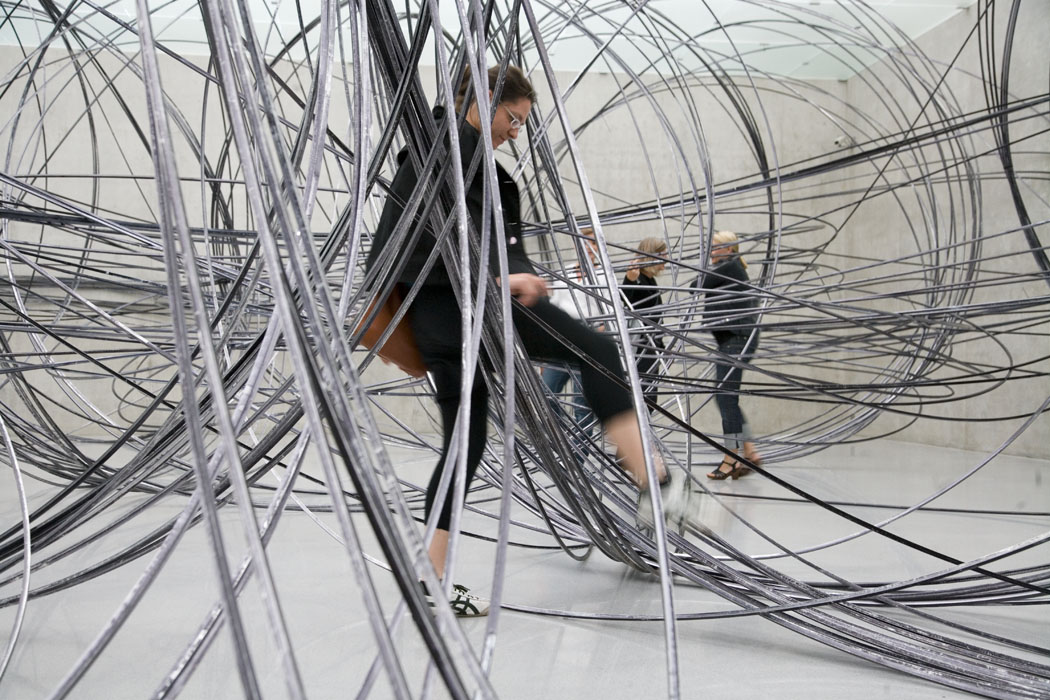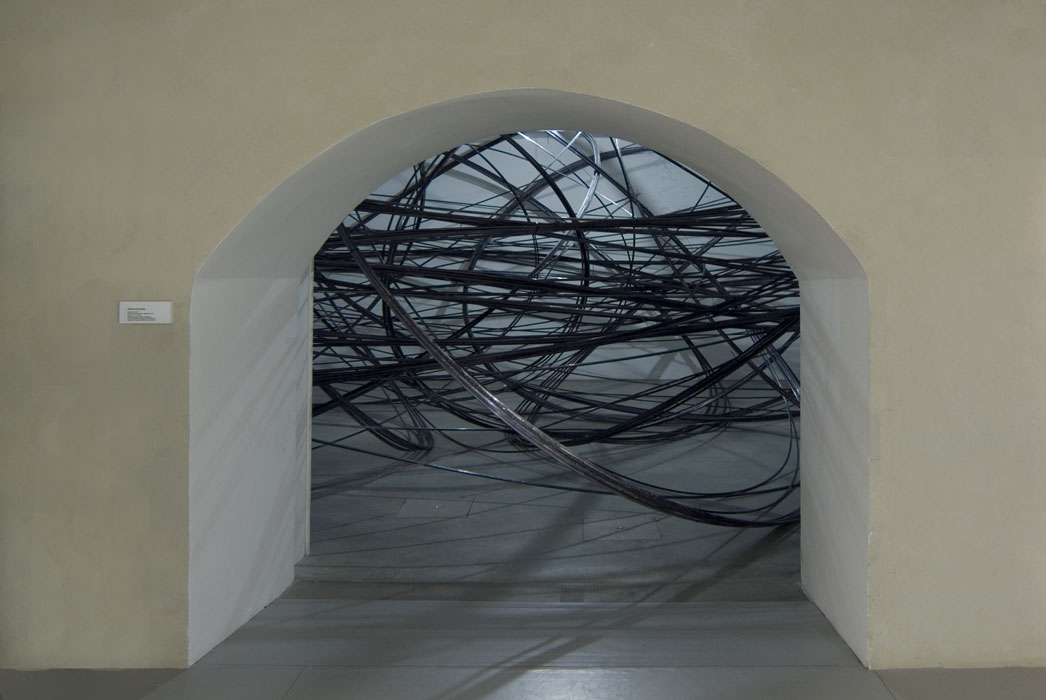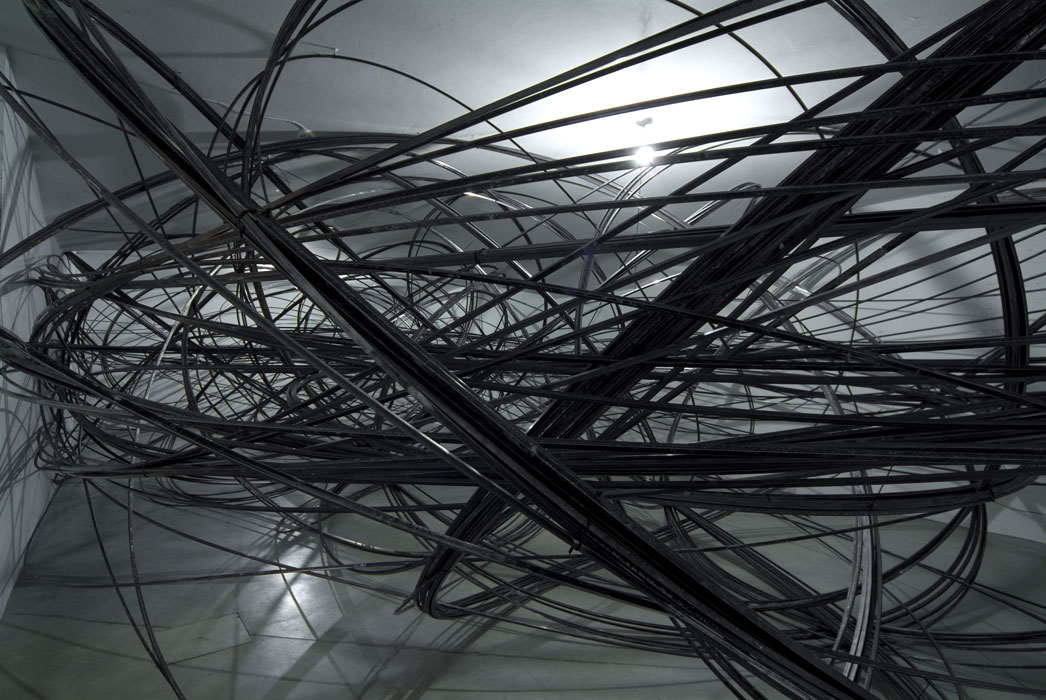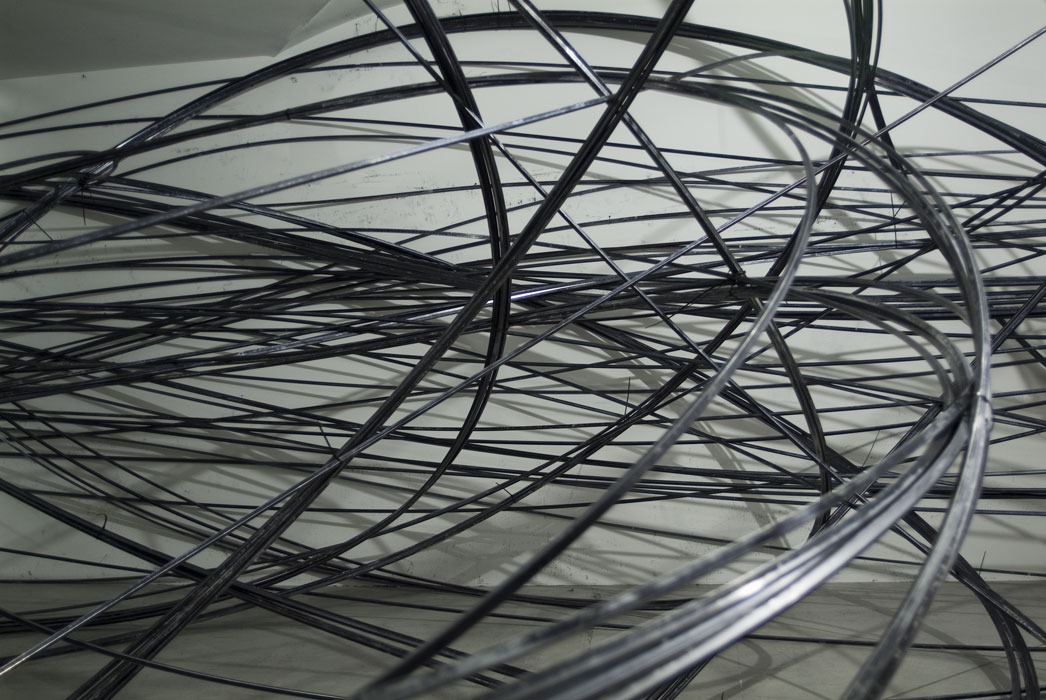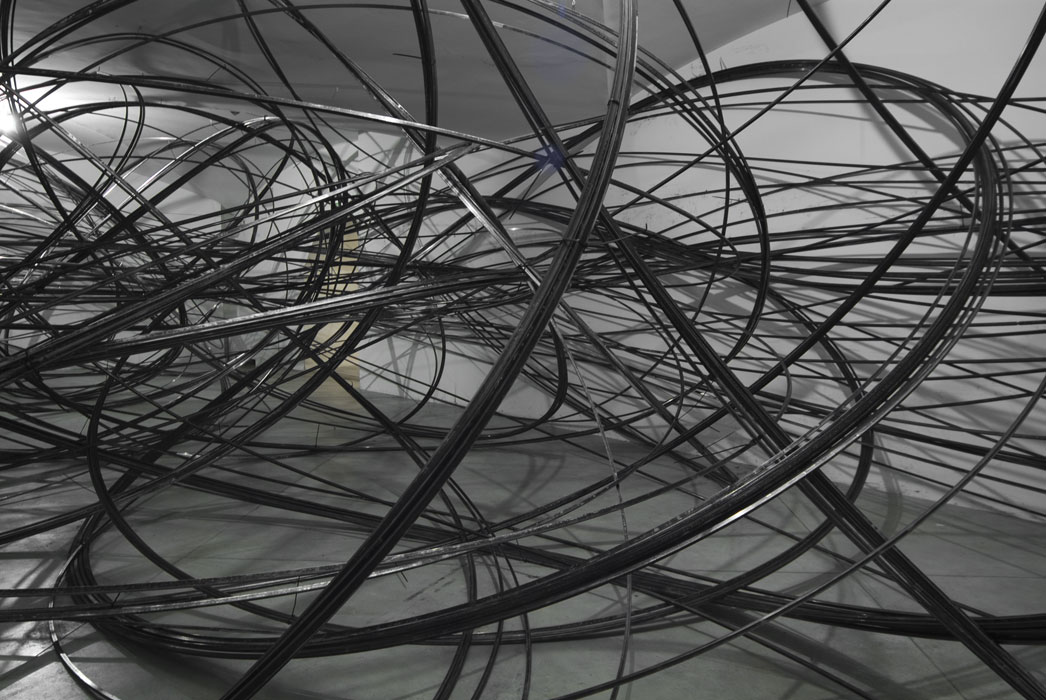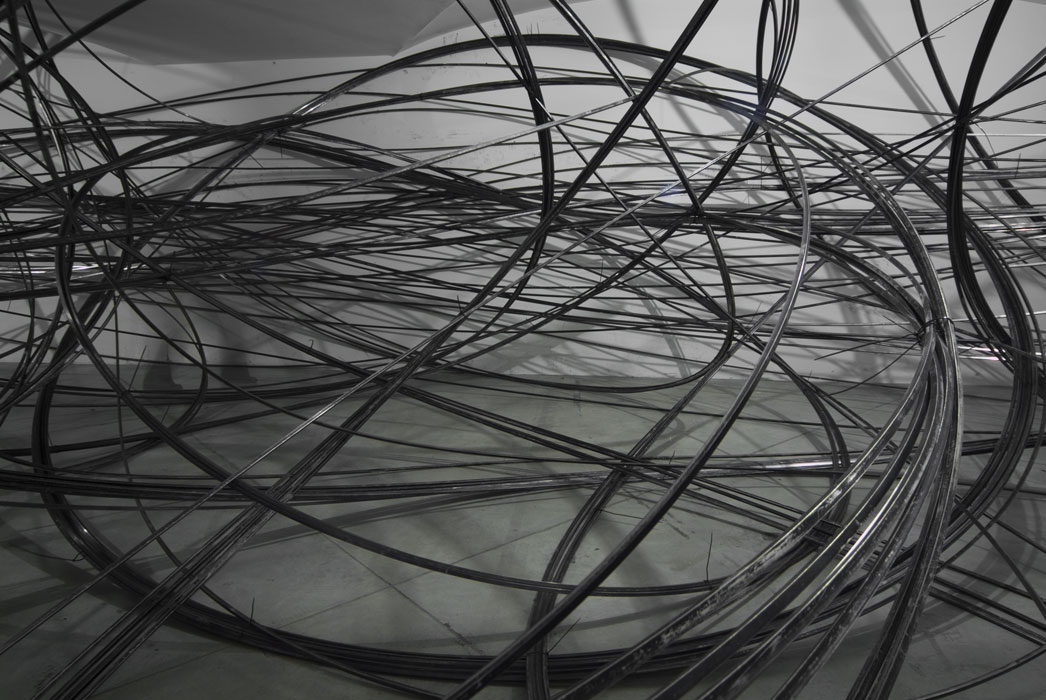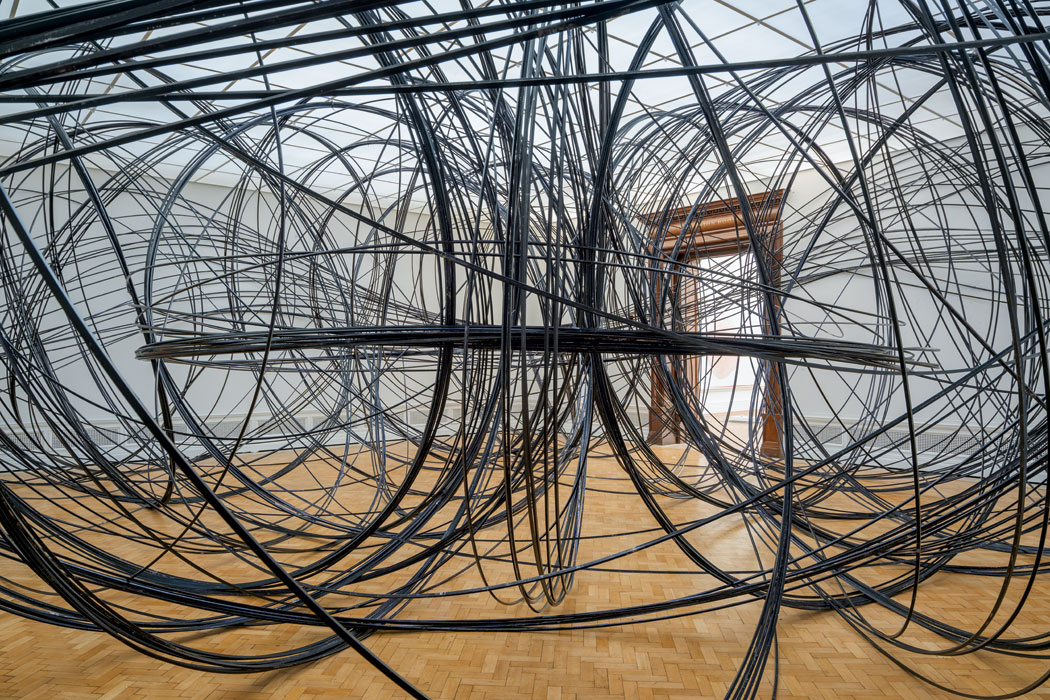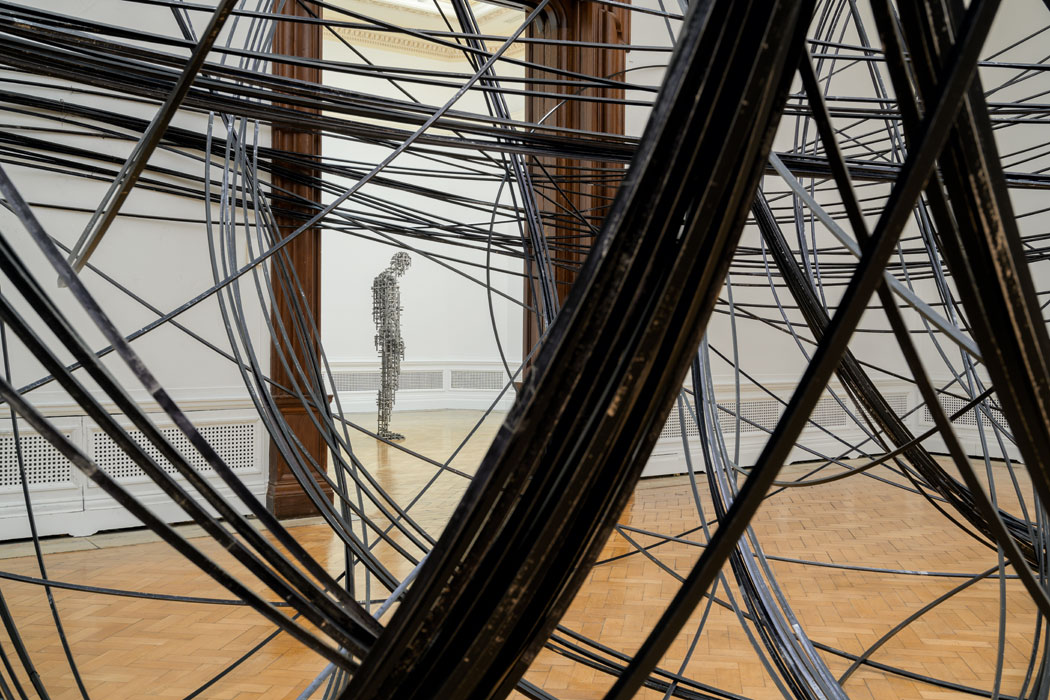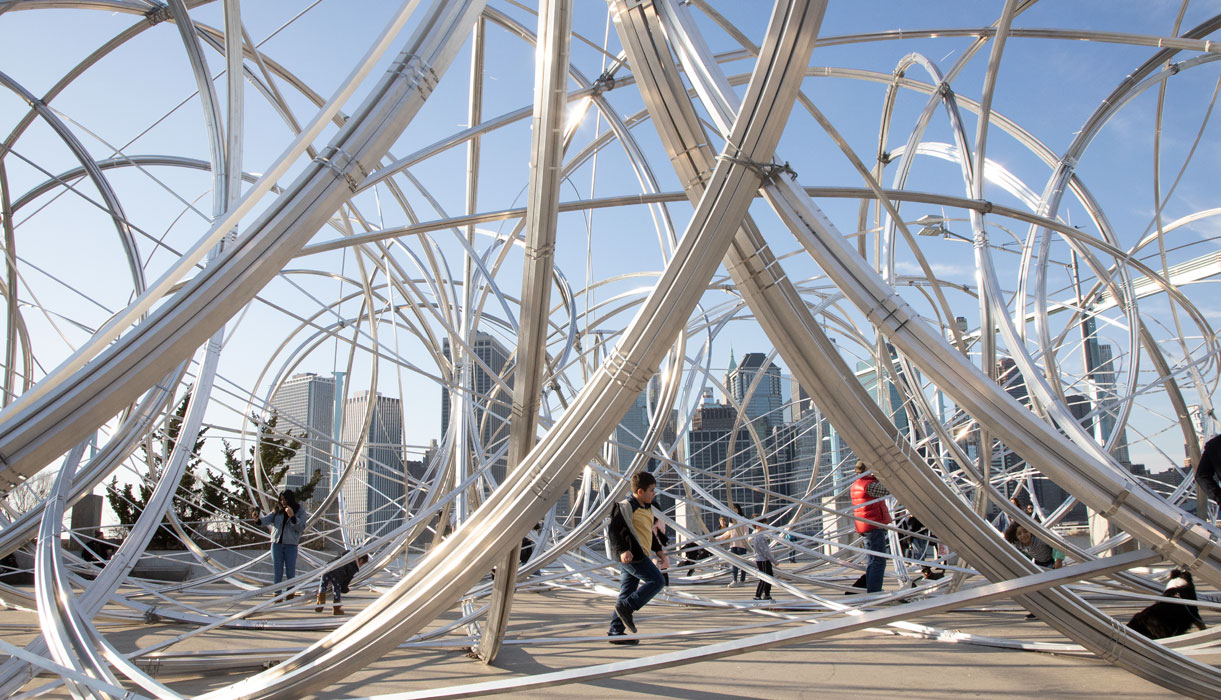Viewed from the entrance to the gallery, CLEARING appears as a chaotic explosion of line. Though the work has almost no mass, it takes on the full expanse of the room. Over seven kilometres of thin, flexible square section aluminium tube, a length without beginning or end, it presses in arcs and loops against the confines of the space. It seems to speak a different, contradictory language to the gallery's formal architecture, yet its form remains defined, its energy contained and trapped by the floor, ceiling and walls. And still it acts against the simple right-angled geometry of the space, defying the rules of perspective that allow a measure of distance, ordered recession, a vanishing point. There is no focal point here: CLEARING is a dynamic field of visible energy, a shifting interplay of dark and reflected light. It has often been described as a 'drawing in space'; Gormley has spoken of it as 'a nest, a trap, to ensnare the viewer'.
CLEARING draws you into its skeletal caverns, offering the possibility of a path, a passage through its field that involves an effort of the whole body as you push past or step through, parting the swaying coils that tremble to the touch and clank as they meet or separate, setting off a resonance that travels along the line. Entangled, your body becomes part of the work, you feel it, and others see it as such, whether they're in there with you or outside, viewing you from the entrance.
Martin Caiger Smith, excerpt from the exhibition catalogue Antony Gormley, Royal Academy of Arts, London, 2019, p.100

